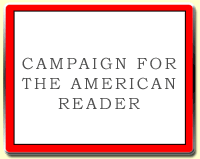 of global environmental change, including current projects on sustainable consumption and corporate social responsibility. His books include The Shadows of Consumption (MIT Press, 2008), Paths to a Green World (MIT Press, 2005) (with Jennifer Clapp), Loggers and Degradation in the Asia-Pacific (Cambridge University Press, 2001), and Shadows in the Forest (MIT Press, 1997), winner of the 1998 Sprout Award from the International Studies Association for the best book in global environmental affairs.
of global environmental change, including current projects on sustainable consumption and corporate social responsibility. His books include The Shadows of Consumption (MIT Press, 2008), Paths to a Green World (MIT Press, 2005) (with Jennifer Clapp), Loggers and Degradation in the Asia-Pacific (Cambridge University Press, 2001), and Shadows in the Forest (MIT Press, 1997), winner of the 1998 Sprout Award from the International Studies Association for the best book in global environmental affairs.Last week I asked him what he was reading. His reply:
I am an avid reader of both fiction and non-fiction. I only write non-fiction, but I'm constantly reading fiction to enjoy a good story as well as develop my ear for high-quality writing. I mainly read non-fiction books to think about big ideas, although I have a strong preference for books that draw me through an argument with striking images, curious stories, and convincing information.Read more about The Shadows of Consumption, and visit Peter Dauvergne's faculty webpage.I especially enjoy reading classics by writers who I feel can help me to improve my own writing. A few days ago I finished Ernest Hemingway's novel, To Have and Have Not. I finished this short book, but I was not able to relate to the rough language, wooden characters, or disjointed narrative: I would not recommend it. (The Old Man and the Sea and For Whom the Bell Tolls are much better.) I'm now near the end of John Steinbeck's Cannery Row, a light novel with lively characters and humorous stories. (Steinbeck's Of Mice and Men and The Grapes of Wrath are both more hard-hitting.) In the next day or so, I'll begin George Orwell's Nineteen Eighty-Four.
Unlike with fiction, I tend to read two or three non-fiction books simultaneously. I'm now reading Paul Collier's The Bottom Billion and James Gustave Speth's The Bridge at the Edge of the World. I will soon start Thomas Friedman's Hot, Flat, and Crowded as well as the book Beef, a history of how the cattle industry has changed the world by Andrew Rimas and Evan Fraser.
--Marshal Zeringue




